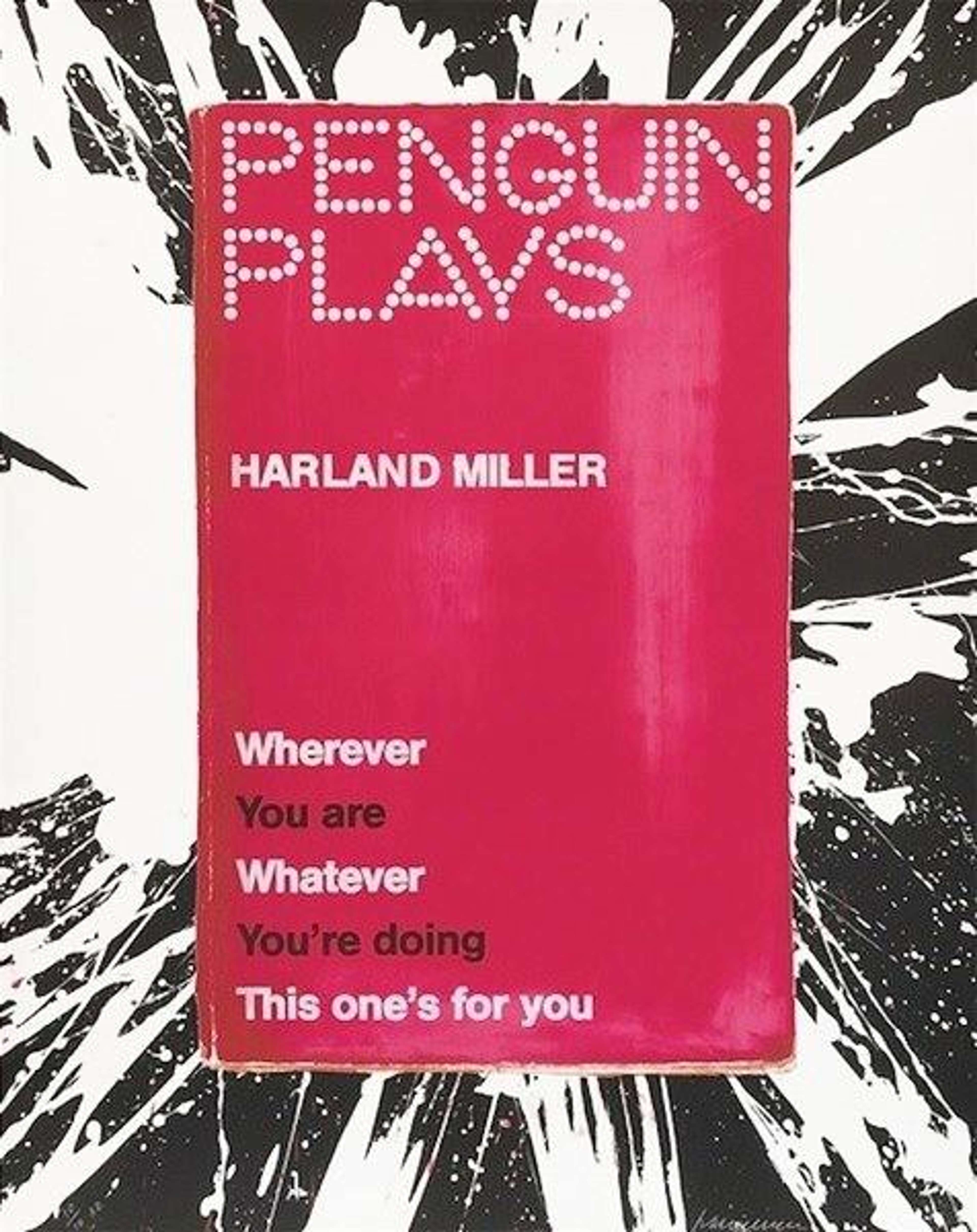
Wherever You Are Whatever You're Doing This One's For You

Wherever You Are Whatever You're Doing This One's For You
Signed Print
Harland Miller
£3,350-£5,000
$6,500-$10,000 Value Indicator
$6,000-$9,000 Value Indicator
¥30,000-¥45,000 Value Indicator
€3,850-€5,500 Value Indicator
$35,000-$50,000 Value Indicator
¥700,000-¥1,040,000 Value Indicator
$4,450-$6,500 Value Indicator
There aren't enough data points on this work for a comprehensive result. Please speak to a specialist by making an enquiry.
138 x 110cm, Edition of 50, Screenprint
Auction Results

Track auction value trend
Meaning & Analysis
Wherever You Are, Whatever You’re Doing, This One’s For You is a screen print, signed, dated and numbered by the artist. It belongs to Harland Miller’s Penguin series and was produced in 2013.
Wherever You Are, Whatever You’re Doing This One’s For You was produced in an edition of 50, the work headlined Harland Miller’s solo exhibition at Reflex Amsterdam in late 2013. The show examined a different facet of Miller’s interest in the Penguin books, focusing on the Penguin Plays series. The works on display were influenced by Miller’s long standing artistic influences - the writings of Edgar Allen Poe, F. Scott Fitzgerald and Ernest Hemingway. Their novels have always inspired Miller’s practice and yet in these, Miller explains: “the jazzy Broadway-style branding of this series has a lightness and a level of unreality compared with the authoritative Classics. The fact that they are plays suggests something larger than life.” And larger than life they are, Miller blows up the size of the prints, enveloping the viewer with his wit. The monochromatic paint suggests a darker tone in relation to a majority of Miller’s work. Wherever You Are, Whatever You’re Doing This One’s For You,rather than being self-reflexive, seems to offer a collation of ideas and memories.
The inspiration for the title comes from Miller’s insomnia and his predilection for late night radio. “I like that kind of DJ patter which infiltrated those early levels of my sleep,” he says. “On one level they are snatches of DJ banter, which are meant to be meaningless and carry you through to the next record, and on the other hand, they perhaps have a sinister undertone.” Whilst for Miller, this work is informed by his insomnia, he wishes his viewers to come to their own conclusions. “The thing is never to force anyone into a particular reading that is contrary to whatever emotional memory is triggering it,” Miller has said, memory is the central theme to his overall body of work. But, he is not opposed to his viewers taking it literally either.
A limited edition of 50, Wherever You Are, Whatever You’re Doing This One’s For You is an exclusive opportunity to purchase a screen print which is in limited supply. Whilst it is a departure from the beloved Penguin books, Miller hints to the Penguin Play’s origins, evident in the depicted tattered spine and rough finish of the cover. The monochromatic apparent detonation behind the play emphasises the vibrancy of the fuchsia cover, Miller using the black and white text to echo the background explosion.
In Wherever You Are, Whatever You’re Doing This One’s For You, Miller takes his characteristic style of the Penguin books and originality, and fuses its Pop Art origins with Abstract Expressionism, resulting in a new style infused with the feeling of familiarity associated with his classic prints.